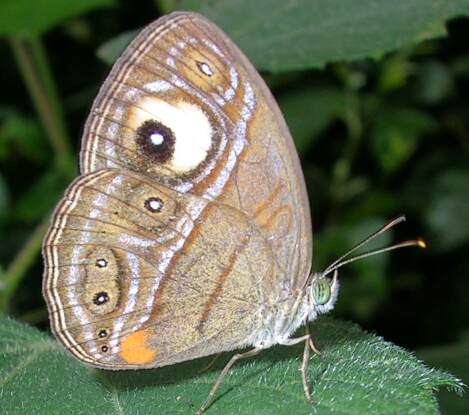|
Ocellus (other)
An ocellus is a simple eye found in invertebrates, in which pigment is distributed randomly and for which there are no additional structures. It is not to be confused with the ocelloid, a light-sensitive structure found in some dinoflagellates. Ocellus may also refer to: * Ocellus (mimicry), an eye-like marking * Ocellus Lucanus (5th century BC), ancient Greek philosopher See also * Ocelus {{disambig ... [...More Info...] [...Related Items...] OR: [Wikipedia] [Google] [Baidu] |
Ocellus
A simple eye (sometimes called a pigment pit) refers to a form of eye or an optical arrangement composed of a single lens and without an elaborate retina such as occurs in most vertebrates. In this sense "simple eye" is distinct from a multi-lensed "compound eye", and is not necessarily at all simple in the usual sense of the word. The structure of an animal's eye is determined by the environment in which it lives, and the behavioural tasks it must fulfill to survive. Arthropods differ widely in the habitats in which they live, as well as their visual requirements for finding food or conspecifics, and avoiding predators. Consequently, an enormous variety of eye types are found in arthropods. They possess a wide variety of novel solutions to overcome visual problems or limitations. Use of the term ''simple eye'' is flexible, and must be interpreted in proper context; for example, the eyes of humans and of other large animals such as most cephalopods, are ''camera eyes'' and ... [...More Info...] [...Related Items...] OR: [Wikipedia] [Google] [Baidu] |
Ocelloid
An ocelloid is a subcellular structure found in the family Warnowiaceae (warnowiids), which are members of a group of unicellular organisms known as dinoflagellates. The ocelloid is analogous in structure and function to the eyes of multicellular organisms, which focus, process and detect light. The ocelloid is much more complex than the eyespot, a light-sensitive structure also found in unicellular organisms, and is in fact one of the most complex known subcellular structures. It has been described as a striking example of convergent evolution. History The ocelloid was originally described in 1884. Early descriptions were met with skepticism and hypothesized to represent the eye of a multicellular organism coincidentally engulfed by a single-celled organism. The possibility that it had an evolutionary relationship to plastids had been considered at least since the 1970s, although until the 2010s direct evidence was scarce. Structure Ocelloids contain subcomponents analogou ... [...More Info...] [...Related Items...] OR: [Wikipedia] [Google] [Baidu] |
Ocellus (mimicry)
An eyespot (sometimes ocellus) is an eye-like marking. They are found in butterflies, reptiles, cats, birds and fish. Eyespots could be explained in at least three different ways. They may be a form of mimicry in which a spot on the body of an animal resembles an eye of a different animal, to deceive potential predator or prey species. They may be a form of self-mimicry, to draw a predator's attention away from the prey's most vulnerable body parts. Or they may serve to make the prey appear inedible or dangerous. Eyespot markings may play a role in intraspecies communication or courtship; the best-known example is probably the eyespots on a peacock's display feathers. The pattern-forming biological process (morphogenesis) of eyespots in a wide variety of animals is controlled by a small number of genes active in embryonic development, including the genes called Engrailed, Distal-less, Hedgehog, Antennapedia, and the Notch signaling pathway. Artificial eyespots have been show ... [...More Info...] [...Related Items...] OR: [Wikipedia] [Google] [Baidu] |
Ocellus Lucanus
Ocellus Lucanus was allegedly a Pythagorean philosopher, born in Lucania in the 6th century BC. Aristoxenus cites him along with another Lucanian by the name of Ocillo, in a work preserved by Iamblichus that lists 218 supposed Pythagoreans, which nonetheless contained some inventions, wrong attributions to non-Pythagoreans, and some names derived from earlier pseudopythagoric traditions. Pseudo-Ocellus Lucanus A pseudepigraphic work, "''On the Nature of the Universe''", was attributed to him, and the citation of its author nowadays appears as Pseudo-Ocellus Lucanus. In two apocryphal letters that Archytas allegedly sent to Plato, he mentioned that he had talked with the descendants of Ocellus and sent four Ocellus' books to him. Both letters appear to have been forged to authenticate the false treatise, which can be dated to around the 1st century BC. Stobaeus (''Ecl. Phys.'' i. 13) has preserved a fragment of the supposed ''Περὶ νόμου'' in the Doric dialect, but the ... [...More Info...] [...Related Items...] OR: [Wikipedia] [Google] [Baidu] |



